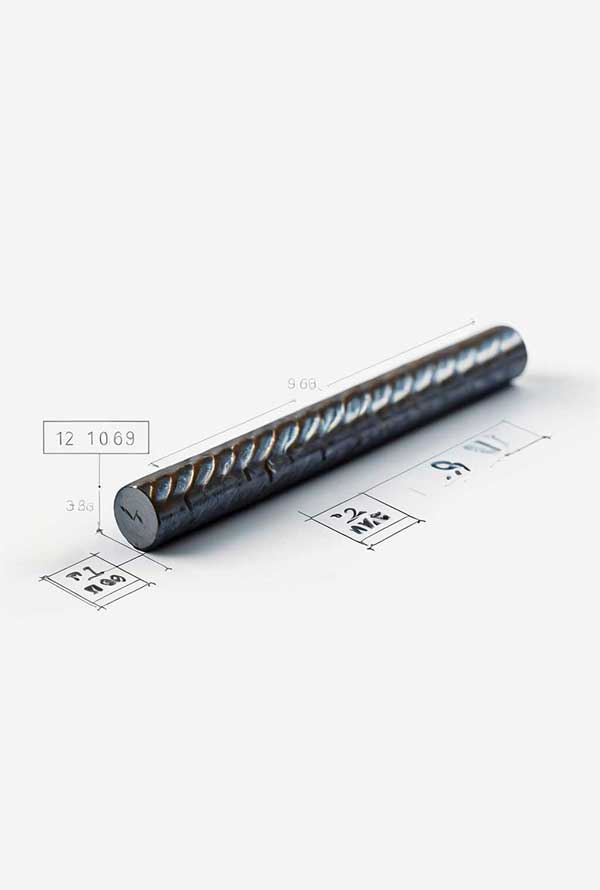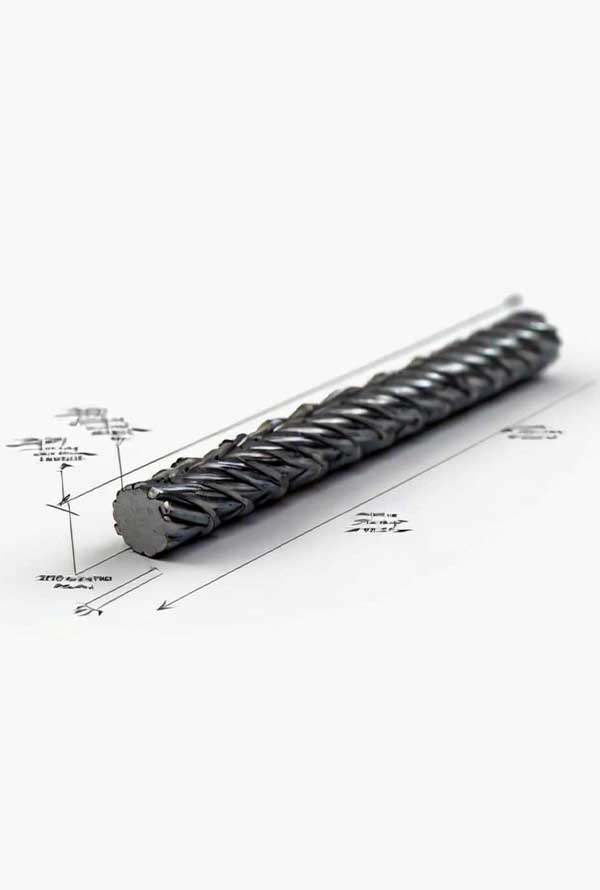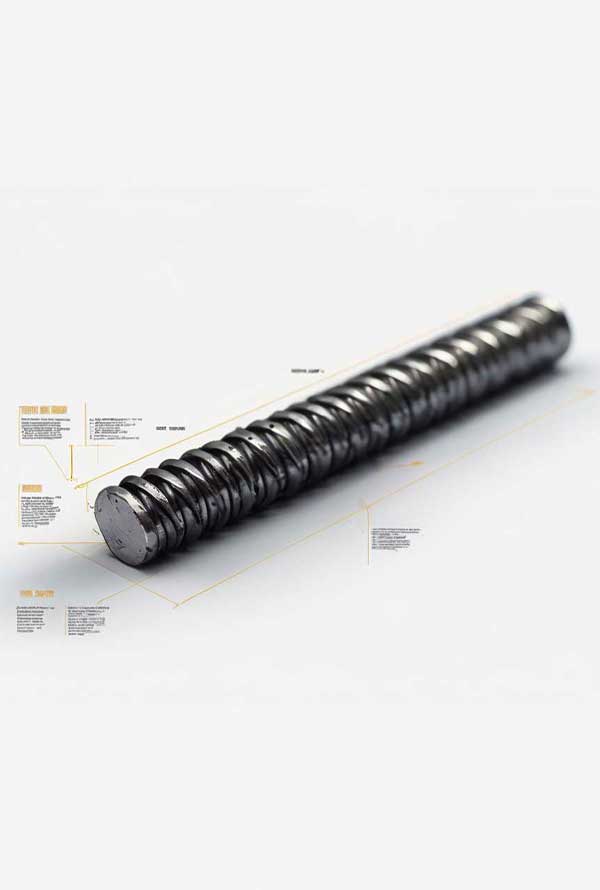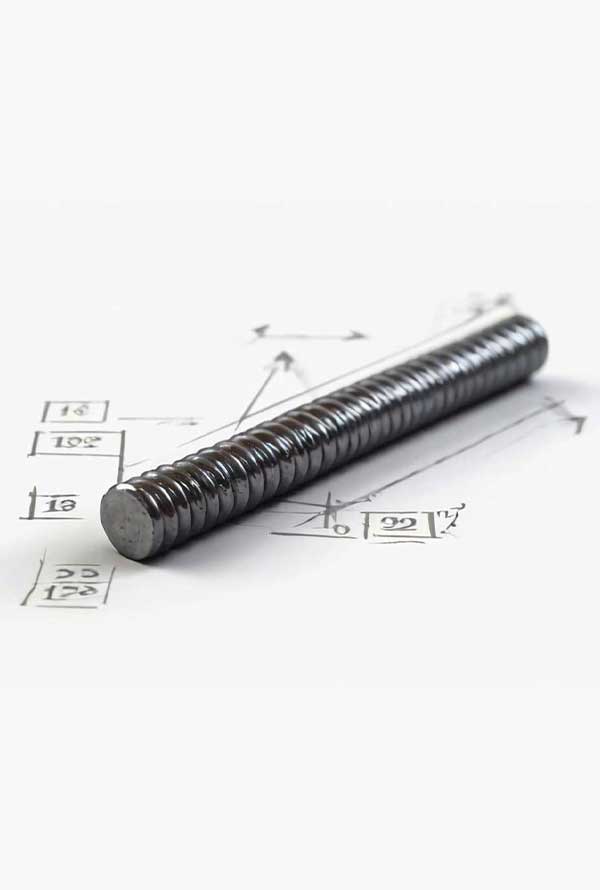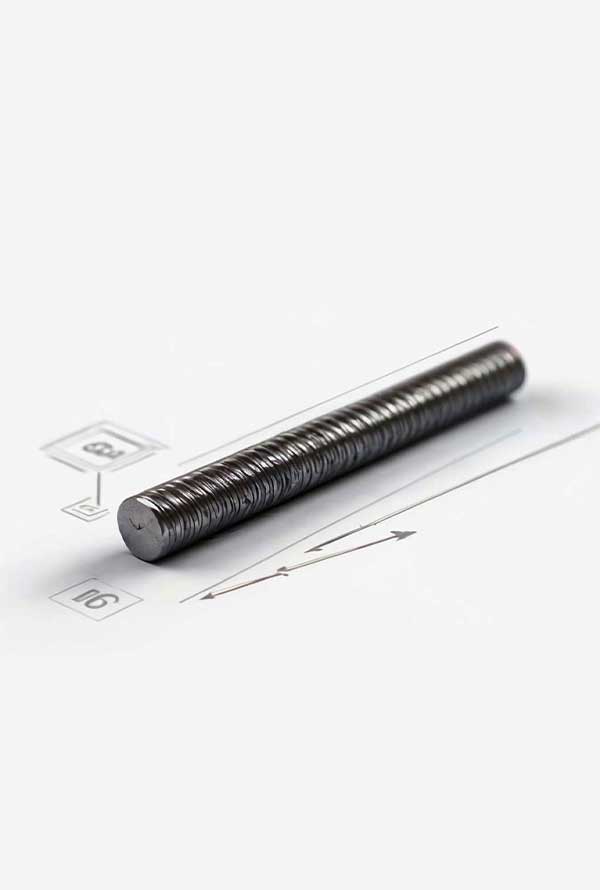Rebar 32 is a key component in the construction industry, known for its strength and capacity to support heavy loads in large projects. Sirjan Hadid Steel offers this essential product at factory prices, giving builders and contractors a unique chance to optimize their project choices with high-quality, standard rebar. Discover more about the benefits and uses of 32 rebar with us!
Factors affecting the price of rebar size 32
The price of rebar 32, as a commonly used steel section in the construction industry, is influenced by several factors. Price fluctuations in the global steel market, the main raw material for rebar production, are among the most critical factors affecting the product’s price.
An increase or decrease in domestic demand for rebar also affects its price. Additionally, exchange rate fluctuations, especially of the dollar, due to the steel industry’s reliance on importing raw materials, impact the final cost of rebar. Moreover, rising inflation rates, as a general factor, affect the price of all products, including rebar, increasing production costs and, consequently, the final product price. In summary, the price of rebar 32 is influenced by several factors, including global steel market fluctuations, supply and demand, exchange rates, and inflation rates.
The importance of proper selection and timely purchase
Choosing the correct type of rebar 32 and purchasing it at the right time plays a crucial role in the success of construction projects. Given price fluctuations, it is recommended to consult sales experts and gather information on the latest prices and market conditions before purchasing.
Technical specifications and standards for rebar 32
Rebar 32 is one of the most commonly used steel sections in the construction industry. Due to its high strength and large dimensions, it is used to bear heavy loads in structures. This product is manufactured following national and international standards and possesses the following technical specifications:
Rebar size 32 is produced according to strict standards, including Iran’s national standards (INSO 3132) and international standards such as ASTM A615, A615M, DIN488, and JISG3112. These standards specify detailed technical specifications for the rebar, such as dimensions, rib types, mechanical properties, and permissible tolerances.
Rebar size 32 is usually manufactured in lengths of 12 and 6 meters, with a 12-meter piece weighing approximately 76 kilograms, based on Stahle standard guidelines. However, due to differences in manufacturing methods and permissible tolerances in standards, the precise weight of each piece may slightly vary.
Additionally, rebar 32 is typically bundled into packages weighing approximately 2 tons, with each bundle containing about 27 pieces. However, the number of pieces in each bundle may vary depending on the manufacturer and the exact dimensions of the pieces.
The importance of standards in rebar production
Adherence to production standards ensures the quality and safety of rebars. Using standard rebars significantly increases the service life of structures and reduces maintenance costs.
Mechanical properties of rebar 32
Rebar size 32, as a widely used steel section in the construction industry, has remarkable mechanical properties. The yield stress of this rebar is approximately 4,000 kg/cm², meaning it can bear loads up to this stress level and return to its original state without any permanent deformation.
Under increased loading, the rebar enters the plastic deformation phase and ultimately fractures at a tensile stress of 6,000 kg/cm². The plastic deformation capacity of rebar 32 is around 14%, indicating that it can withstand significant deformation before fracturing. This feature, along with the rebar’s high strength, makes it a suitable choice for use in concrete structures.
Applications of rebar 32
Due to its high tensile and compressive strength, plastic deformation capability, and bending resistance, rebar 32 is used in a wide range of high-load-bearing concrete structures.
This rebar is employed in constructing bridges, dams, high-rise buildings, and industrial structures that require high strength and durability. Additionally, in the foundations of tall buildings and industrial structures subjected to heavy compressive loads, rebar size 32 is used to reinforce the concrete. Furthermore, due to its high bending resistance, this rebar is widely applied to reinforce beams and concrete slabs exposed to bending stresses.
Another crucial feature of rebar size 32 is its high plastic deformation capacity, making it suitable for structures that may be subjected to earthquakes or other dynamic loads. This feature allows the structure to deform under sudden or unexpected forces and prevents complete destruction.
Technical specifications of rebar 32
Rebar 32 is a widely used steel section in the construction industry, suitable for heavy-load-bearing structures due to its proper mechanical properties and large dimensions. The technical specifications of this product are as follows:
Dimensions and Weight
- Diameter: 32 millimeters (named based on its diameter)
- Length per piece: Usually available in 6 and 12-meter lengths
- Weight: Each 12-meter piece weighs approximately 76 kilograms
Production process for rebar 32
The production of rebar 32, as a widely used steel section, involves various stages, each playing a critical role in determining the final product’s quality and characteristics. Generally, the production stages include:
Raw Material Preparation
In this stage, raw materials required for rebar production are collected and prepared. These materials typically include iron ore, iron scrap, lime, coke, and alloying materials. After analysis and measurement, these materials are mixed in specified ratios and prepared for entry into melting furnaces.
Melting and Refining
The raw material mix is melted in electric arc furnaces or basic oxygen furnaces until it becomes liquid. At this stage, impurities in the molten steel are removed through various processes such as oxidation and reduction, and alloying elements are added to achieve the desired mechanical properties.
Continuous Casting
After refining, the molten steel is continuously cast into molds to produce solid steel billets. These billets are then cut to specified dimensions.
Hot Rolling
Steel billets are passed through rolling mills at high temperatures under intense pressure to form rebars. In this stage, the rebar’s diameter and length are adjusted, and the desired ribs are created on its surface.
Heat Treatment
To improve the mechanical properties of the rebar, heat treatment is performed after hot rolling. This includes heating the rebar to a specific temperature and then cooling it rapidly or gradually.
Inspection and Quality Control
In this stage, the produced rebars undergo rigorous inspections to ensure compliance with national and international standards. Inspections include checking dimensions, weight, mechanical properties, microstructure, and surface defects.
Cutting and Packaging
Inspected rebars are cut to standard lengths and packaged for market distribution.
Conclusion
Considering the technical and mechanical features of rebar 32, choosing it from Sirjan Hadid Steel guarantees the quality, durability, and safety of your structures. By purchasing directly at factory prices, you will not only benefit from high standards but also optimize project cost management. For real-time price updates and expert consultations, contact us now.
